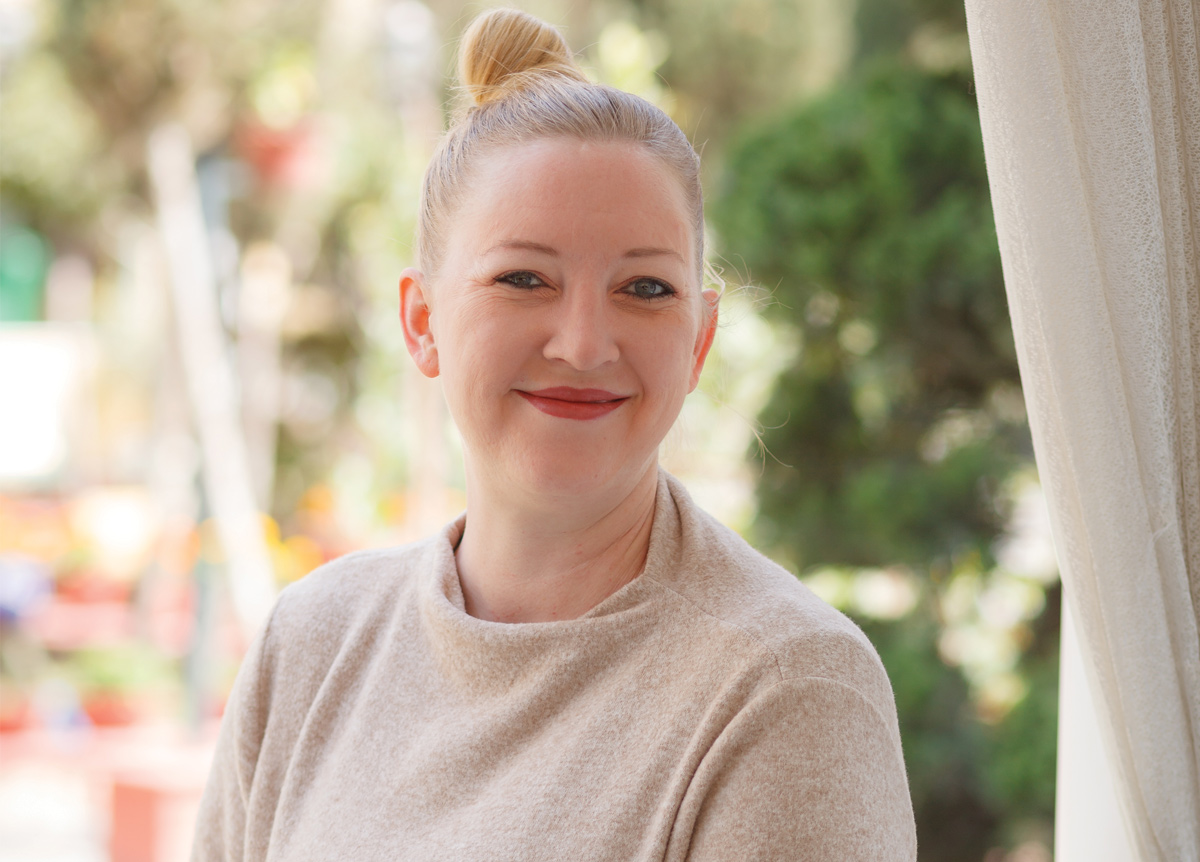
Anne Tönsmann
Teppichhaus Tönsmann
“A single touch is enough to tell a good carpet from bad,” says Anne Tönsmann, the fifth generation leader of her family business in Germany called Teppichhaus Tönsmann, one of the leading importers of carpets in Germany. An avid lover of art and culture, Tönsmann has an affinity for Nepal that goes beyond business. Her love of Nepali aesthetics is evident in the decor that graces some sections of her carpet museum in Germany.
According to her, the Nepalese carpet industry can catapult to new heights with adequate media promotion and government support. Excerpts of an interview with Kareena Koirala of B360:
Your family has been in the carpet business since 1885. What are the key changes that you have noticed in the market as a 5th generation business leader?
Over the years, the carpet industry has witnessed a plethora of changes. There was a time when the carpet industry was significantly more popular than any other flooring industry. Today, e consumers have plenty of flooring options to choose from like hardwood, engineered wood, bamboo, ceramic tiles, laminate and much more. While many agree that these variants are easy to maintain and clean, rugs and carpets lavish much praise not only for their beauty but also because they are the symbols of native creativity.
After the Savonnerie and the Aubusson style carpets were introduced to the world during Louis XIV’s reign in France in the mid 1600s, Europe witnessed a growth in the rug-weaving industry. It was during the Sun King’s reign that a great variety of European rug styles emerged. Over the centuries, more elaborate patterns were created with gradual improvements in design and weaving.
My family has been in the carpet business since 1885. My father got into the business in 1960 and today we are the largest handmade carpet collectors in Germany. Most of my imports originate from developing countries including Nepal. European imports have been fluctuating throughout the years. The carpet market size was projected to expand at a CAGR of 3.0% from 2019 to 2025 and in the emerging markets, consumers have more disposable money to spend on home aesthetics and decorations. So in the coming years, the imports are expected to stabilise further if the economic conditions are favourable.
Have Tönsmann’s core values changed over time?
Tönsmann has been the market leader in Germany when it comes to providing top-notch services that are solely focused on carpets and rugs. Not only do we provide our clients with the best quality rugs and carpets from around the world but we also bring them specialised maintenance services at their homes. These are the attributes that made us stand out in the market. Delivering the best products and services is something that will never change for us.
In an industry where most of the big carpet companies like Beaulieu and Axminster have died down, Tönsmann continues to be the top seller of exquisite carpets in Germany. What measures did you take to survive?
When we talk about the downfall of the carpet industry, we mostly take the American industry into account. Germany is one of the leading importers of carpets in Europe, but what makes Tönsmann different is our specialised service that revolves solely around carpets and rugs. We provide custom manufacturing services to our clients. Years of experience has made it possible for us to customize carpets according to our clients’ needs. https://escortstars.ch Our nationwide onsite service with expert consultants is what brings our customers back.
When you go to furniture stores in Germany, you can see that most of them only sell furniture and no rugs. Should you find rugs in those stores, they are made out of plastic or cheap materials. I have also noticed that machine made rugs are gaining popularity in the market because they have a low price tag. As attractive as they may seem, they don’t last very long.
Since premium carpets are gaining popularity again - thanks to the awareness spread by the digital media and print publications - people are leaning towards purchasing quality carpets that last for decades. Currently, the carpet industry is doing good with more and more people opting for quality rather than cheap prices. Our company has kept in touch with weavers since the early 80’s to ensure that we get the best quality carpets. That is the main reason why Tönsmann has been able to survive.
Have you noticed a change in the purchasing habits of your customers in terms of style?
What I have noticed is that the market trend varies from one country to another. For instance, the American market is very colourful as compared to other countries. These days, people are more into bohemian designs and minimalistic geometric patterns. To adapt to these changes, we keep ourselves updated with the latest trends. However what really keeps us on our toes is client feedback. Since we go to a lot of fairs in Germany, we get to interact with people with an appetite for exquisite carpets and rugs. Their feedback and response are essential for us since they are the ones who we cater to.
Nepal is one of the main suppliers of carpet for Tönsmann. What are the attributes of the products that stand out?
The Nepalese carpet industry produces both traditional and well as modern rugs with impeccable quality. Their marvelous patterns and attractive colours make them unique. The contemporary Nepali rugs are as famous as the traditional ones in the European market because they complement the modern aesthetics so well. Another reason why they are so famous is that Nepalese rugs are unbeatable in terms of durability.
How can the existing carpet companies in Nepal up their game?
In my opinion, the Nepali government has a crucial role to play if the existing carpet companies are to prosper. Most companies that produce rugs in Nepal cannot afford to present their products to the rest of the world through international fairs and exhibitions. The Nepalese government can take a cue from other countries like Morocco that support the weavers by investing in promotional activities.
I have also experienced that it is tough for international exporters to send handmade rugs back to Nepal for fixing and mending purposes. Making the whole process easier would be a relief. I have a deep and personal connection with Nepal that goes beyond business, but sometimes I find it hard to cope with the unmanaged system. It is high time for the world to know what Nepal has to offer.
What is your bestseller?
Frankly, it all depends on the clients’ tastes and preferences. Modern Nepali rugs definitely make the list.
How can one tell a good carpet from the bad?
Always look for a higher density to see how close together the fibers are tufted. Tuft twist of five or higher indicates that a carpet is durable. The texture of the carpet depends upon the materials that have been used for production so always make sure that you make a purchase from a trusted source only.
Could you share some tips on keeping carpets and rugs in mint condition…
• Regular cleaning is the best way to ensure that your carpet lasts long
• Use carpet pads that are at least as dense as ⅜ to ½ inches
• Give your rugs a good wash every few years because no matter how much you take care of them, dust always gets through them
• Seek professional services in case your carpet has burns or permanent stain. It’s always a good idea to fix wear and tear as soon as possible



.jpg)


